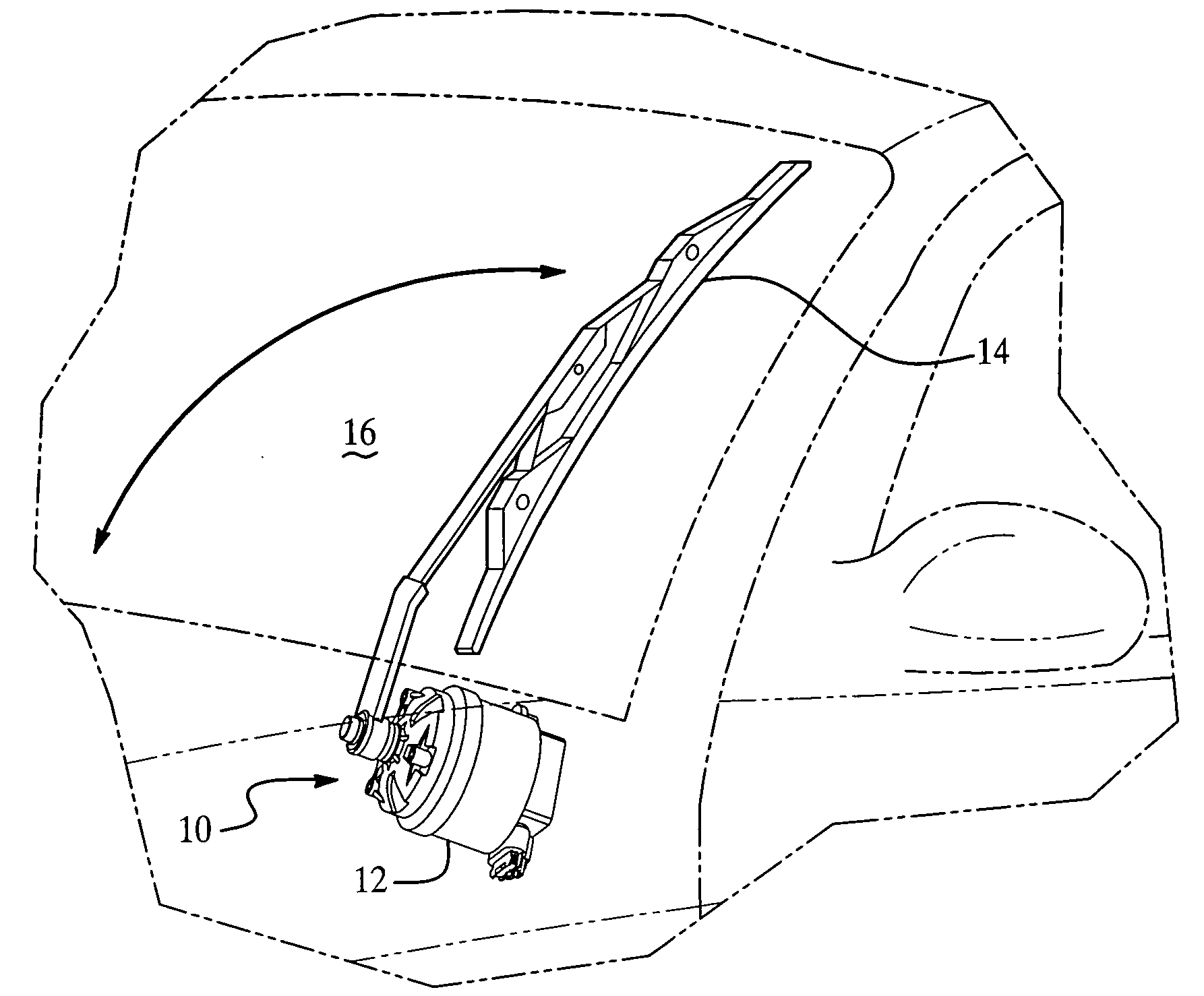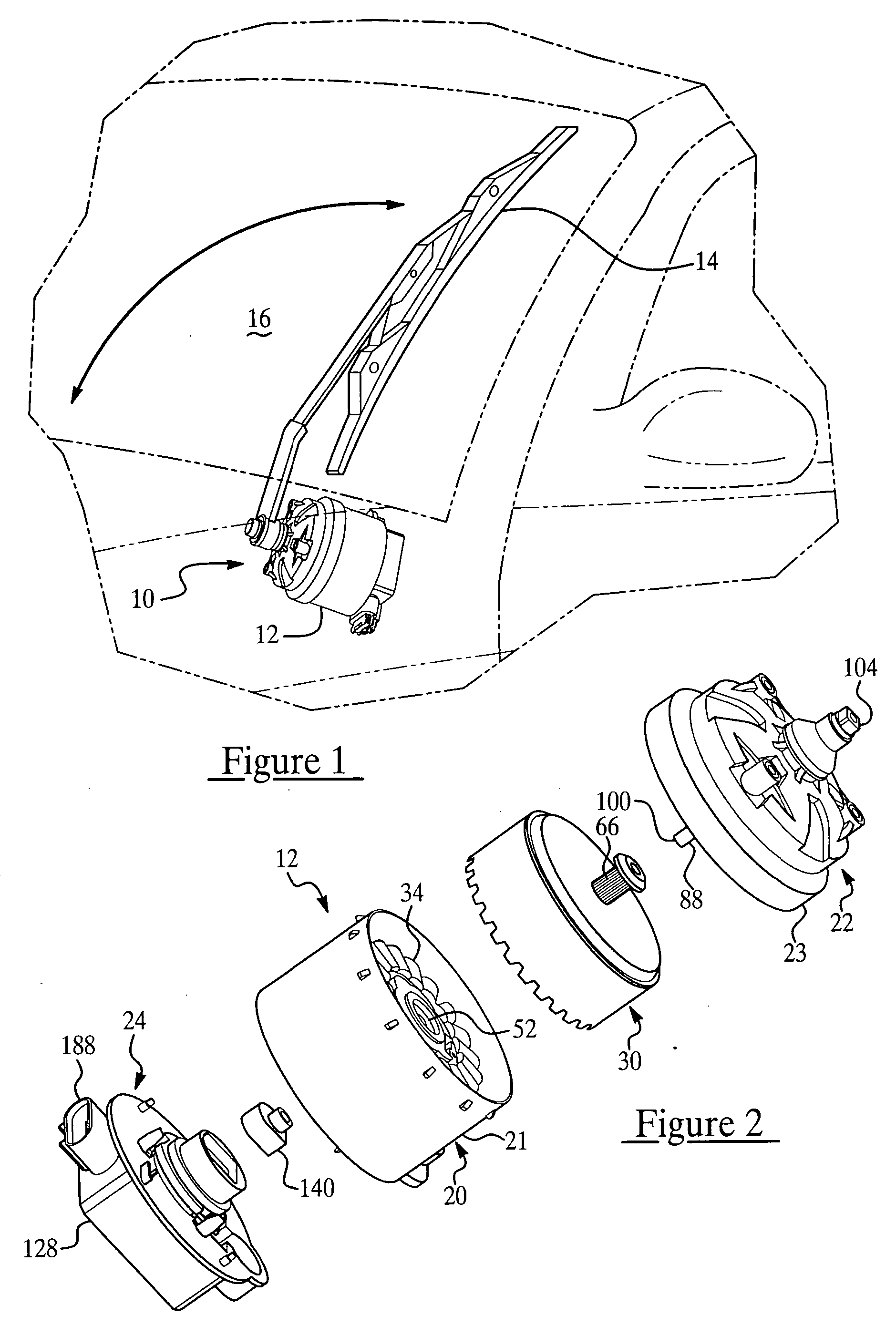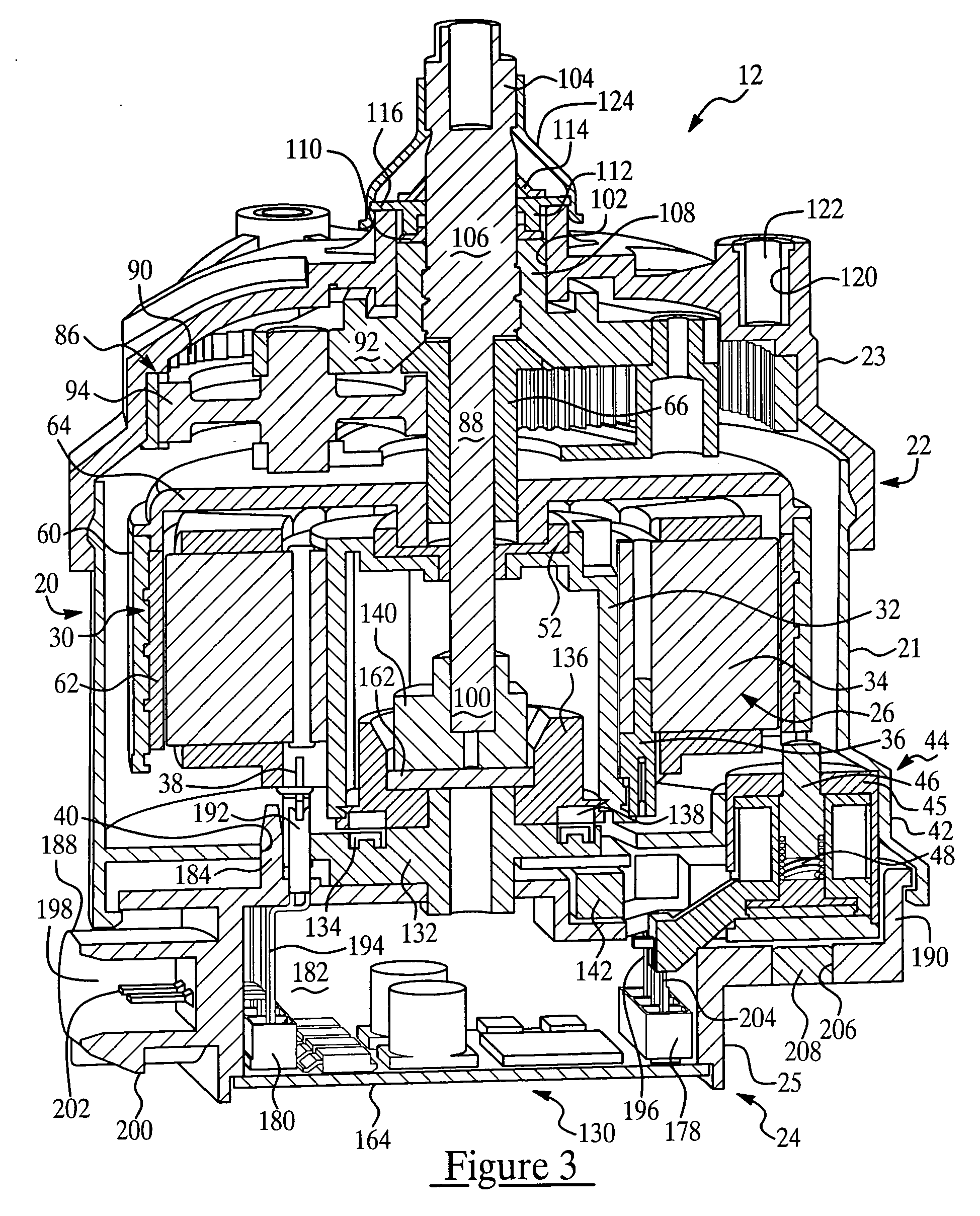Direct drive windshield wiper assembly
a windshield wiper and assembly technology, applied in the direction of magnetic circuit rotating parts, vehicle cleaning, vehicle shape/form/construction, etc., can solve the problems of excessive wiper movement, large and a large amount of underhood space for mechanical linkag
- Summary
- Abstract
- Description
- Claims
- Application Information
AI Technical Summary
Benefits of technology
Problems solved by technology
Method used
Image
Examples
Embodiment Construction
)
[0039] Referring now to the figures where like numerals are used to designate like structure throughout the drawings, a direct drive windshield wiper assembly of the present invention is generally indicated at 10. As shown in FIG. 1, the direct drive windshield wiper assembly 10 includes at least one motor 12 that rotatably drives a windshield wiper 14 across the surface of a windshield 16. Generally speaking, the motor 12 provides a drive torque through an output that is rotatable about the longitudinal axis of the motor 12 so that the windshield wiper 14 is driven about the same longitudinal axis in a repeated wiping motion across the surface of the windshield 16. The motor 12 further controllable to rotate in either direction, thereby providing bi-directional rotation to the windshield wiper 14. In addition, from the description that follows, those having ordinary skill in the art will appreciate that the windshield wiper assembly of the present invention may encompass two or mo...
PUM
 Login to View More
Login to View More Abstract
Description
Claims
Application Information
 Login to View More
Login to View More - Generate Ideas
- Intellectual Property
- Life Sciences
- Materials
- Tech Scout
- Unparalleled Data Quality
- Higher Quality Content
- 60% Fewer Hallucinations
Browse by: Latest US Patents, China's latest patents, Technical Efficacy Thesaurus, Application Domain, Technology Topic, Popular Technical Reports.
© 2025 PatSnap. All rights reserved.Legal|Privacy policy|Modern Slavery Act Transparency Statement|Sitemap|About US| Contact US: help@patsnap.com



